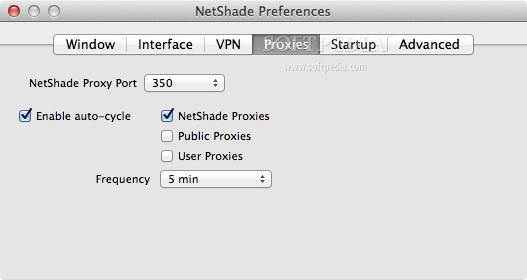


We assume the first NIC is connected to the router of the ISP provider.įor instance you may have a Router called "Livebox" if your ISP provider is called "Orange".
#Squidman proxy server install#
In the first case we have a Proxy Server, where we will install Squid listening at port 3128 (default port), with two NICs. We will consider two different arquitectures. If a site's usage characteristics tend toward cachable objects, this configuration can dramatically reduce the site's web workload. The cache serves references to cachable objects, such as HTML pages and GIFs, and the true httpd (on port 80) serves references to non-cachable objects, This order of magnitude performance improvement on hits suggests that the cache can serve as an httpd accelerator,Ī cache configured to act as a site's primary httpd server (on port 3128), forwarding references that miss to the site's real httpd (on port 80). Measurement of the Squid cache and its Harvest counterpart suggest an order of magnitude performance improvement over CERN or other widely available caching software. The accelerator makes the right thing happen. Or if separately administered HTTP servers should logically appear under a single URL hierarchy, If you need to move parts of your filesystem from one server to another, The Squid redirector can make one accelerator act as a single front-end for multiple servers. The outside world sees no difference (apart from an increase in speed). Squid pulls the HTTP data from the "real" HTTP server (which means that only the accelerator needs to know where the real server is). It takes load away from your HTTP server and internal network. Incoming requests for outgoing data (i.e., that which you publish to the world). Squid working in the Reverse Proxy (httpd-accelerator) mode caches What is the Reverse Proxy (httpd-accelerator) mode? Here (older version but useful) to read the FAQ section.Ģ. It is good to read the FAQ section of Squid when some unexpected problem happens (or even better, before it happens!).
#Squidman proxy server free#
Released under the GNU General Public License, Squid is free software.Īs an example, Squid is used by the Wikimedia Foundation on Wikipedia. Squid was originally designed to run on Unix-like systems. To caching web, DNS and other computer network lookups for a group of people sharing network resources to aiding security by filtering traffic.Īlthough primarily used for HTTP and FTP, Squid includes limited support for several other protocols including TLS, SSL, Internet Gopher and HTTPS. It has a wide variety of uses, from speeding up a web server by caching repeated requests Squid is a proxy server and web cache daemon. Squid can also route content requests to servers in a wide variety of ways to build cache server hierarchies which optimize network throughput. Squid optimizes the data flow between client and server to improve performance and caches frequently-used content to save bandwidth. Squid is used by hundreds of Internet Providers world-wide to provide their users with the best possible web access.


 0 kommentar(er)
0 kommentar(er)
